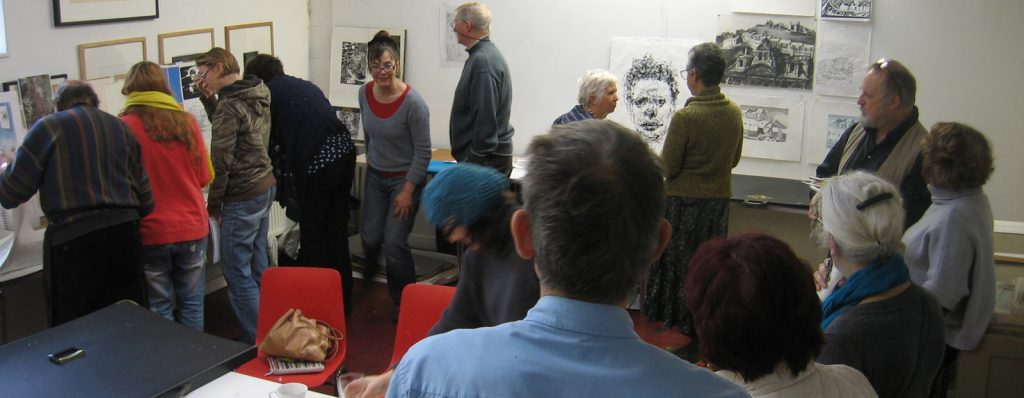
Rosy Ind was assistant to designers Robin and Lucienne Day, to architects Alison and Peter Smithson, and tutor at the Open University and the Cambridge University architecture studios.
Her 1974 thesis was on Joseph Emberton and this was published by Scolar Press in 1983.
Rosy went to Greece to teach English and worked at a school in Athens for 15 years. She was a member of the British School at Athens from 2007 to 2011. Here she was able to use the library for her research on houses for her book on the vernacular architecture of Athens. The illustrated book “ A House with One Column – Athens small houses and their ancestors” was published in 2019.
She came to live in Swansea partly because of her love of Dylan Thomas. She was a member of Swansea Print Workshop for several years where she worked on a number of projects, including “Changing Swansea” (2009) and “Dylan Thomas Dialogues” (2014).
Changing Swansea project | 2009
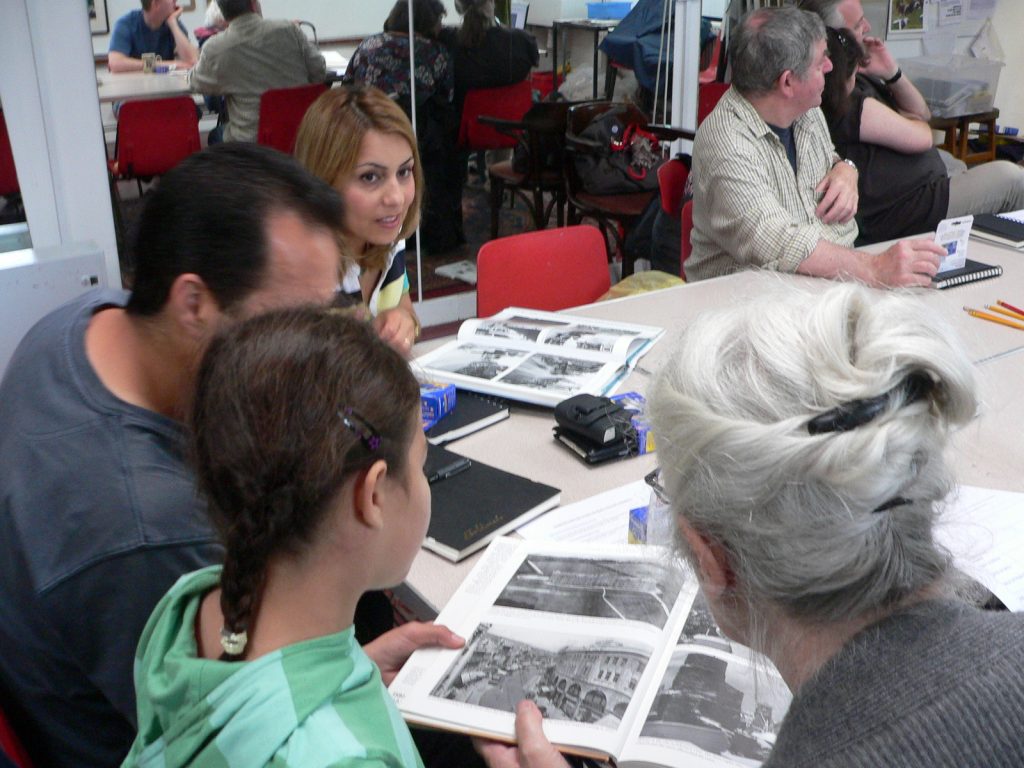
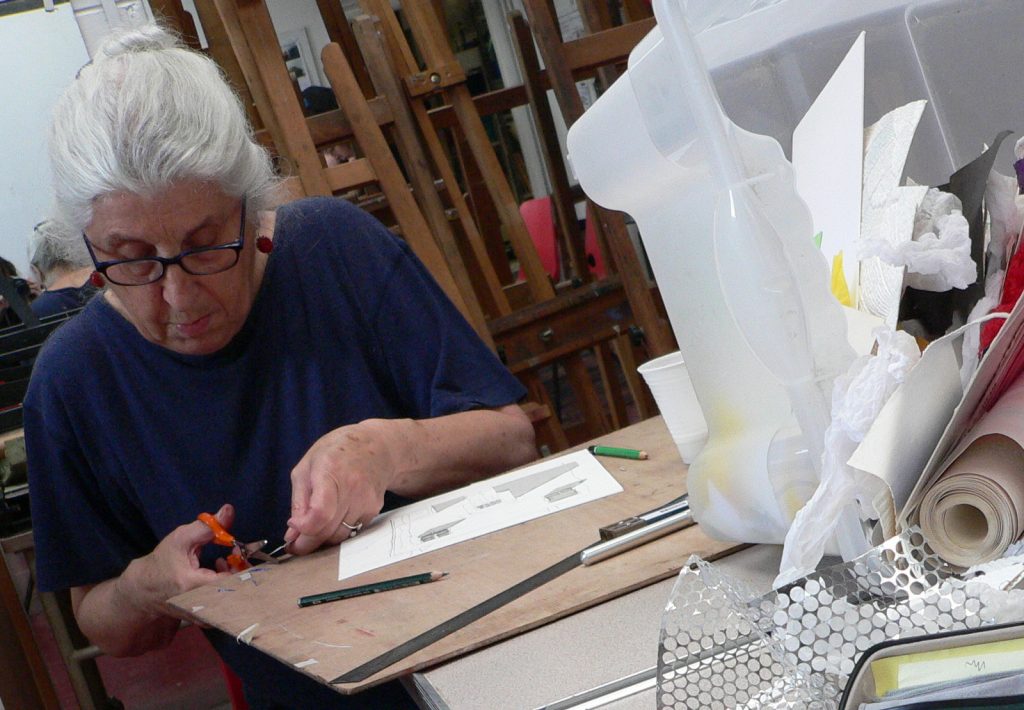
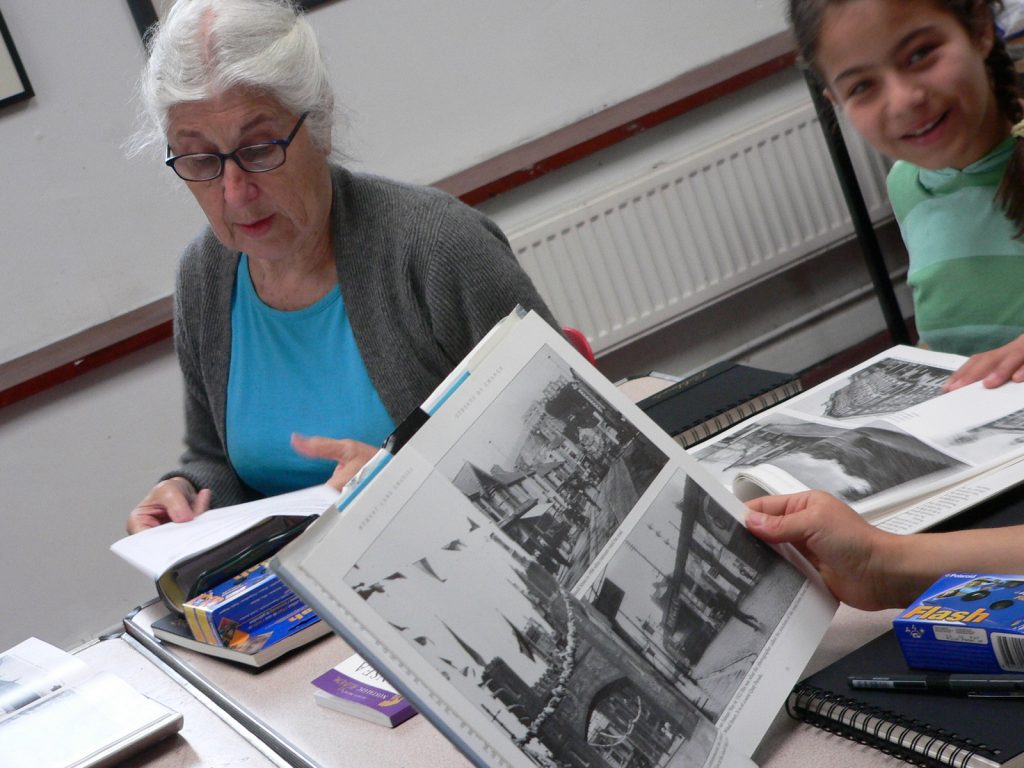
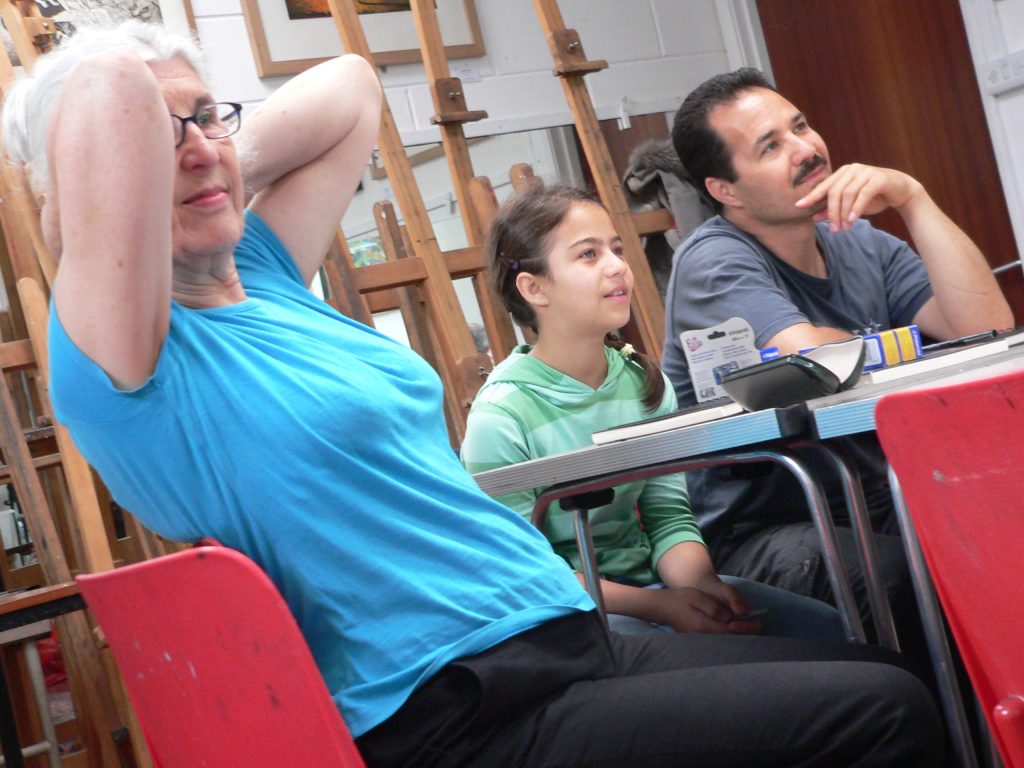
This year long project supported by the Arts Council of Wales involved printmakers from all over the city and beyond in both challenging and interesting ways, responding in a personal way to ‘Changing Swansea…’ through the medium of printmaking.
Support was given to new and very young printmakers to learn the basic skills through a range of subsidised workshops within a programme of visiting artists and masterclasses demonstrating more advanced techniques.
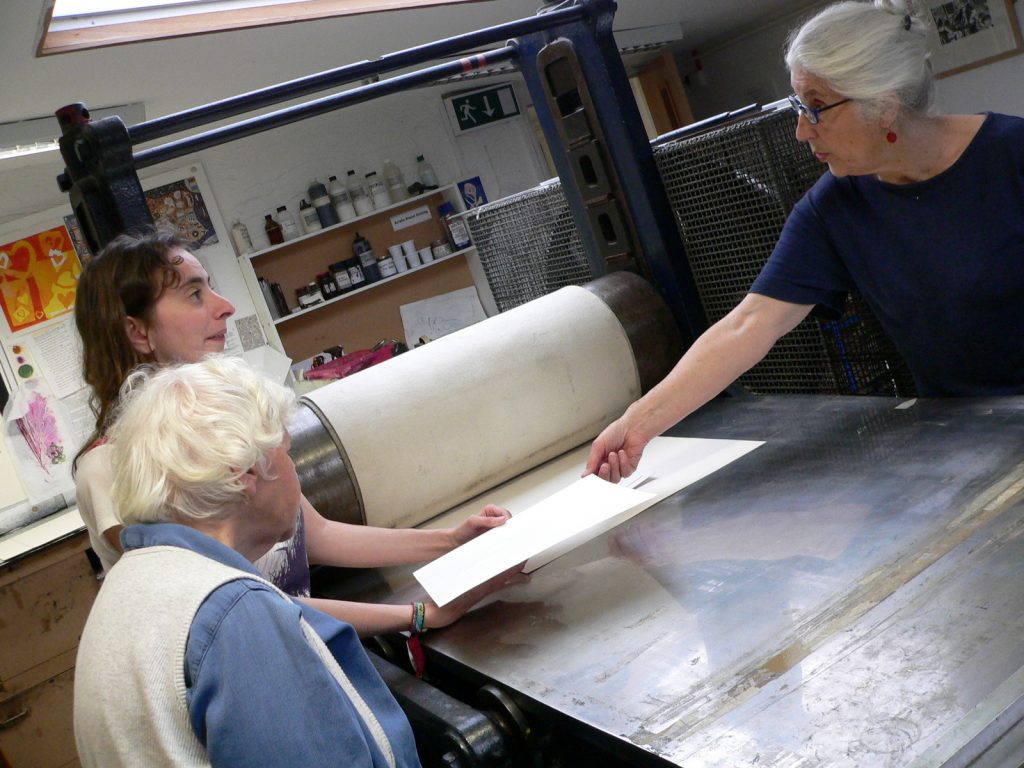
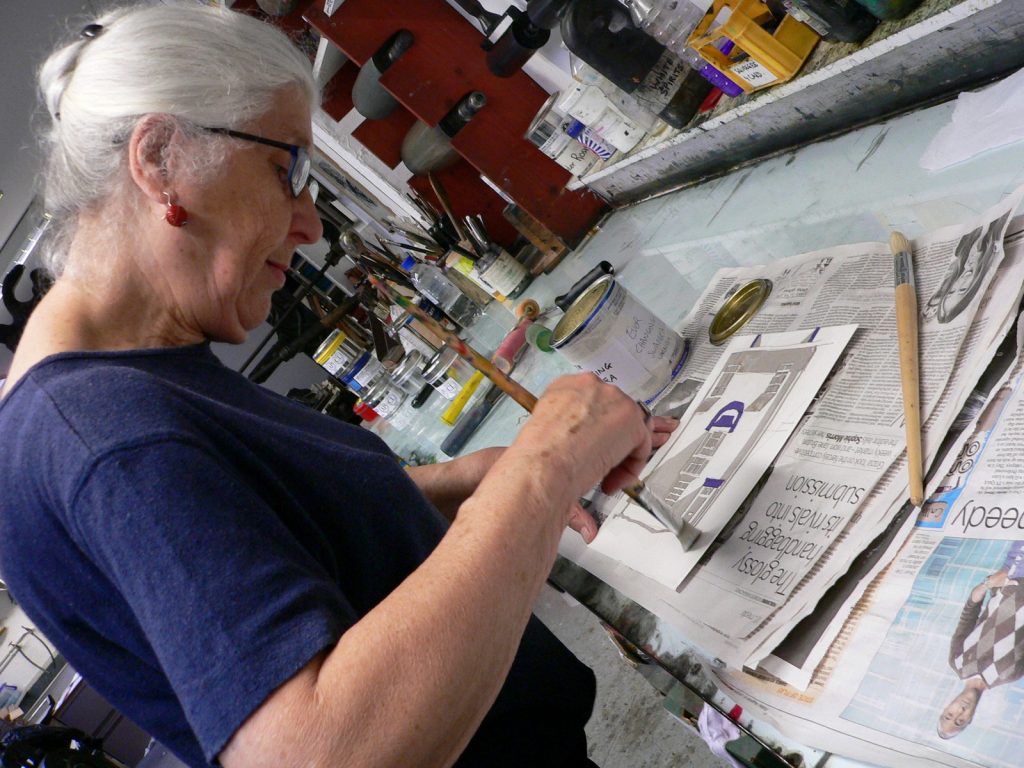
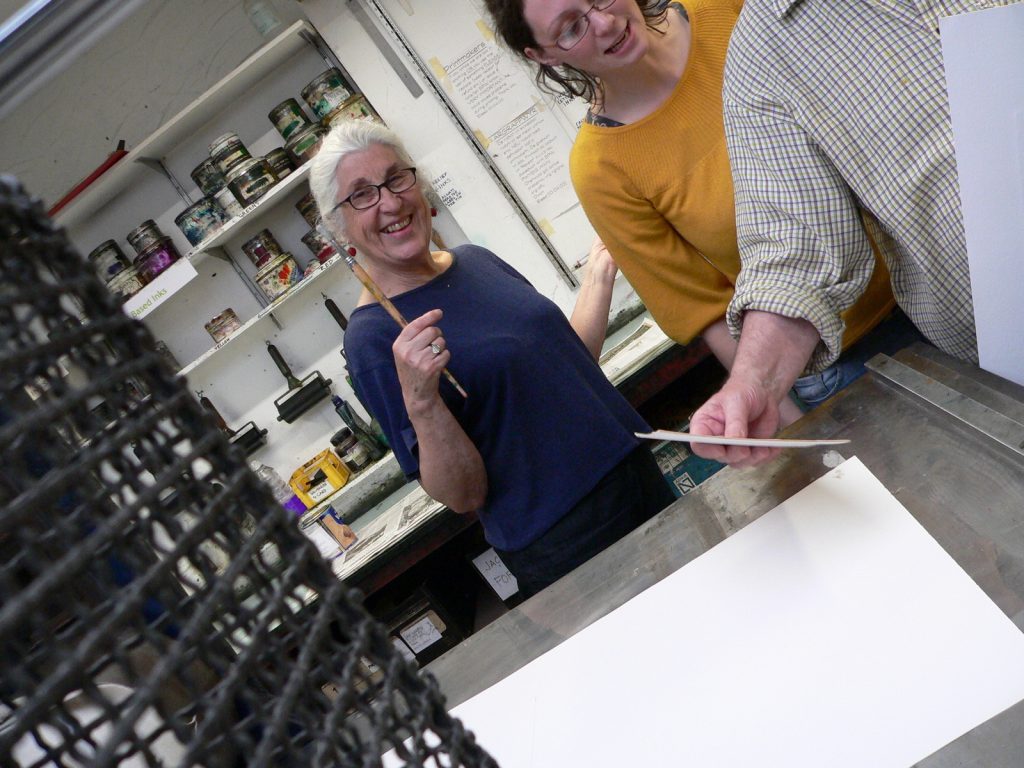
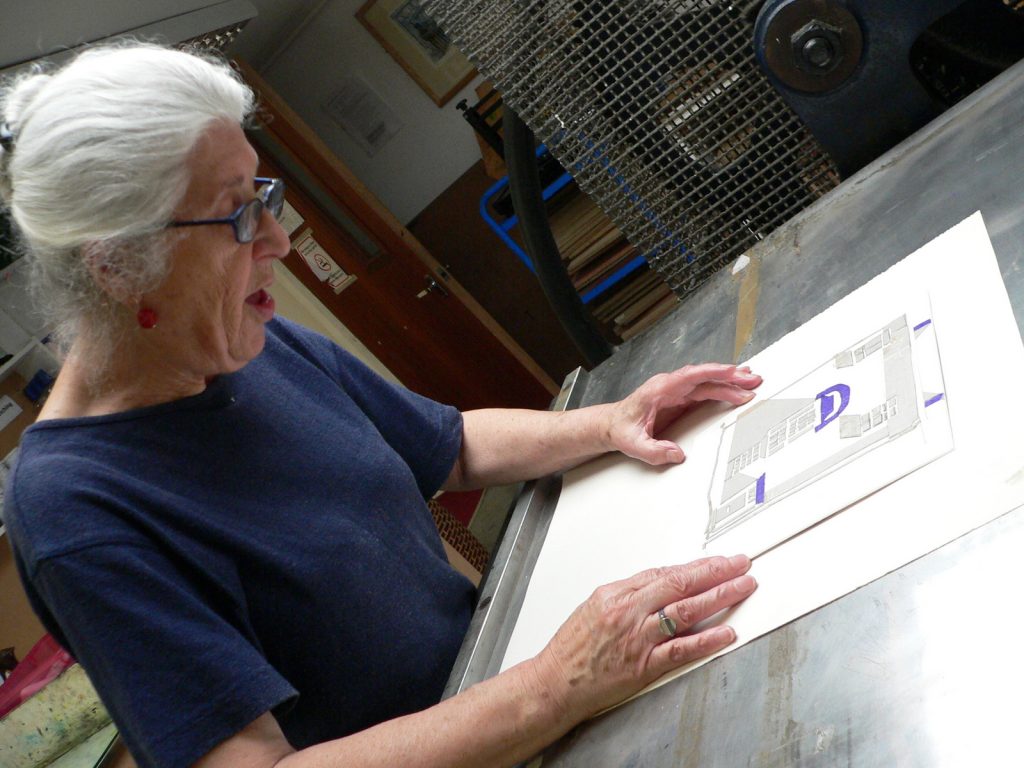
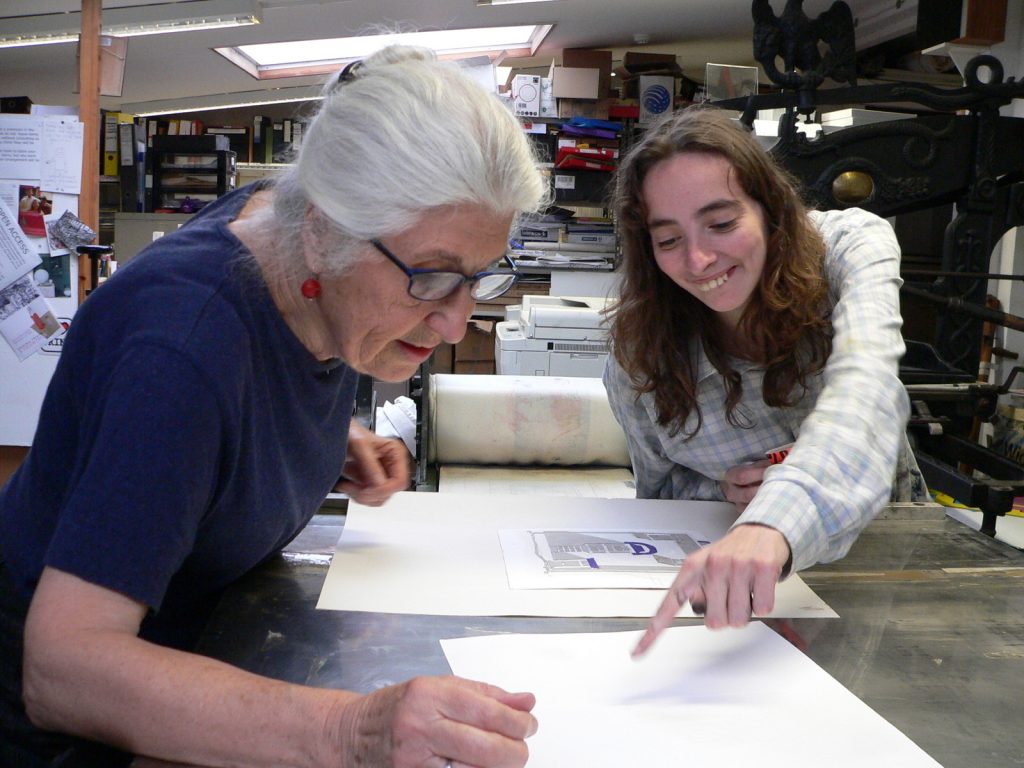
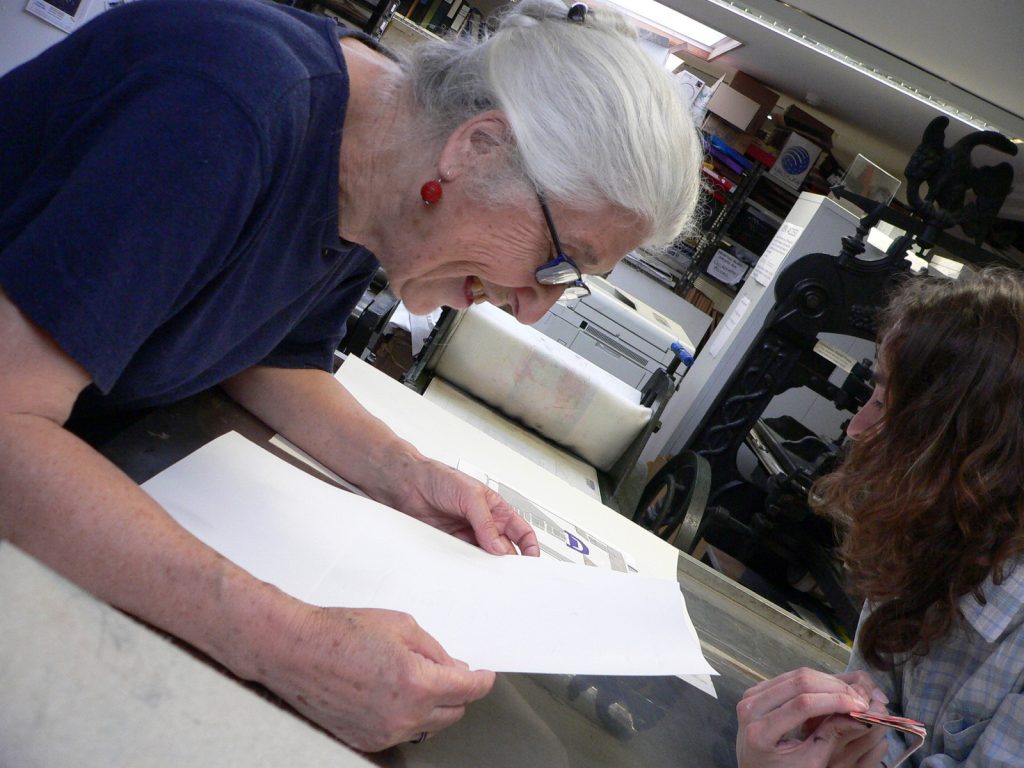
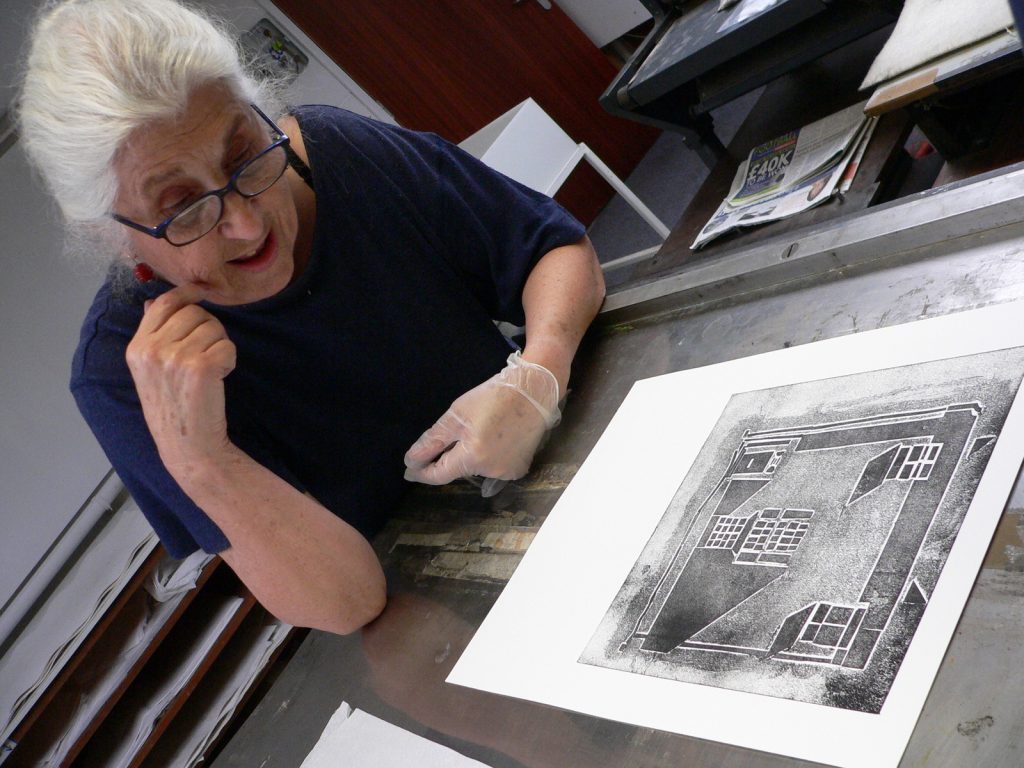
Rosy embraced the project enthusiastically and worked alongside a wide range of contributors to the project learning new skills.
This is catalogue entry for the print below:
“‘I didn’t know Dylan was posh’ I heard two girls say to each other, and Swansea is comfortable for not being so, but she inherits some aristocratic sculpture on surviving-from-the-bombs Edwardian buildings and this is a relief among the 50s building.
So I intended to show this as part of Changing Swansea. But as I looked at the bay from my grandstand window it seemed to me that the most important change, in the past, in the present, and, threateningly, in the future, is the moment when the rain stops, or doesn’t. So this is the change I have recorded.” ROSEMARY IND
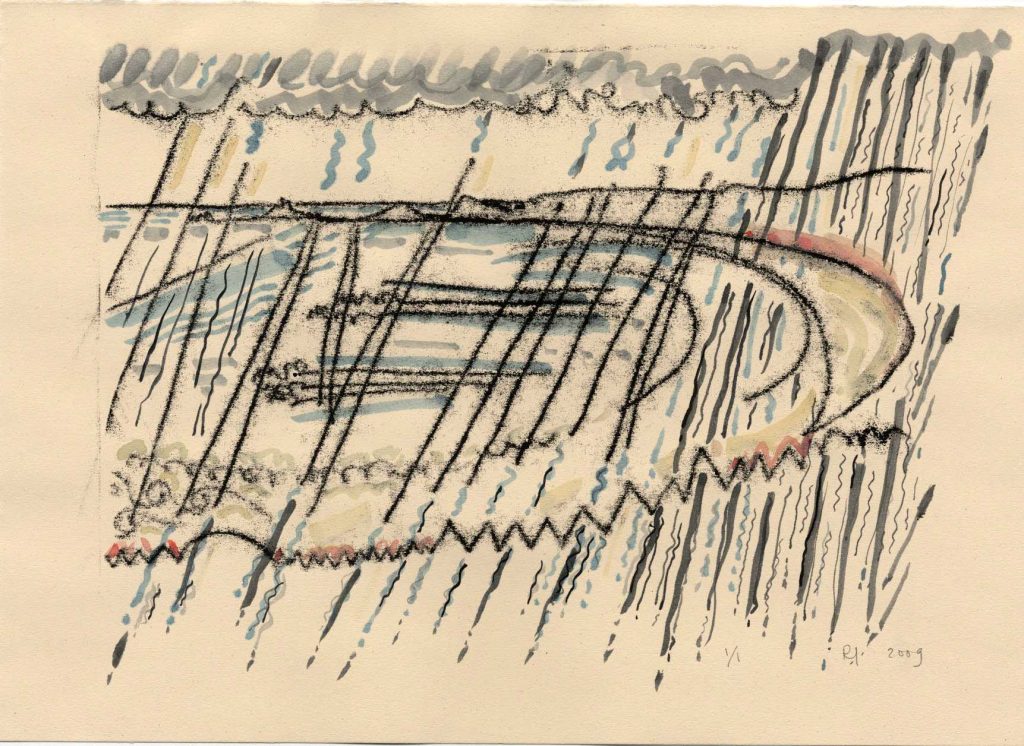
deialogau DYLAN THOMAS dialogues | 2014
In 2014, came an important and celebratory anniversary for Swansea – a hundred years since the birth of Swansea’s most famous and admired poet in 1914. Thomas’s legacy – a creative seam – runs deep and wide in Swansea, Wales and across the world.
Eighteen Wales-based, established and emerging printmakers explored the theme ‘belonging’ inspired by selected texts by Dylan Thomas and two past winners of the contemporary literature prize, Swansea University Dylan Thomas Prize.
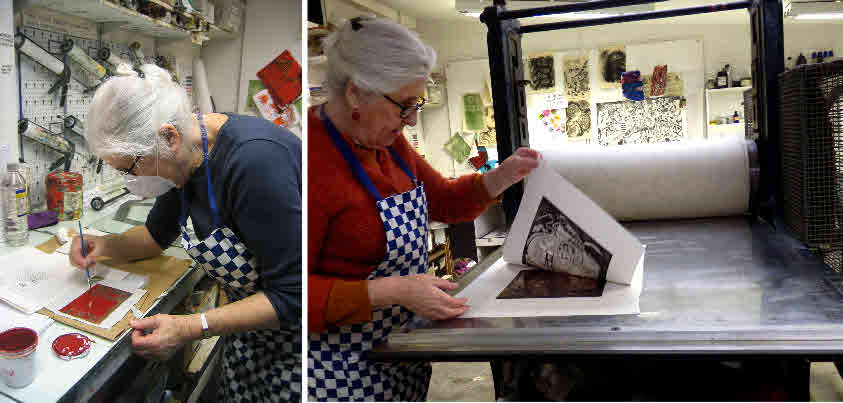
Below is Rosy’s response to the project and her print which was included in the accompanying publication:
Dylan and Me. In 1959-60 I had escaped from teaching in Battersea to work at Better Books in Charing Cross Road near Mooney’s at Cambridge Circus and the ‘French Pub’ in Old Compton Street. Here Ken Fyfe, the manager, drank, he told us, in the company of Brendan Behan and Dylan Thomas. On Saturday afternoons he entertained, with Vouvray and cheesecake, friends and customers, who ranged from students and teachers at Saint Martin’s, Chelsea and the Central School, to the new poets, writers, playwrights, typographers, designers and architects of that time. The admirable Ken, with the permission of the owner, the also admirable Tony Godwin, who wanted us educated, let us take books home. We had to leave their jackets with him, not get biscuit crumbs in them and that was when I first read Dylan Thomas. When I came to live in Swansea, I didn’t know anyone but my father’s uncle had lived in two rooms in Mount Pleasant and my grandfather had been the schoolmaster at Llangasty Tallyllyn. That was almost enough to give me a sense of belonging but when I heard that Dylan Thomas had lived here – ‘if it’s good enough for Dylan, it’s good enough for me’, I thought and Portia, Wordsworth and Milton added more reassurance. Dylan, the snowman, looked up from the High Street and saw the snow-white roofs of Milton Terrace and Watkin Street. I went and checked; he could only have seen the roofs of Milton Terrace. So I contrived an impossible view of the joggled white roofs of his picture and also gave the lovely sweep of the roads, and the Renaissance facades of Watkin Street their proper place in his vision.
Rosy Ind – And the powdered fields
…and the powdered fields of the roofs of Milton Terrace and Watkin Street… | Return Journey | Dylan Thomas,
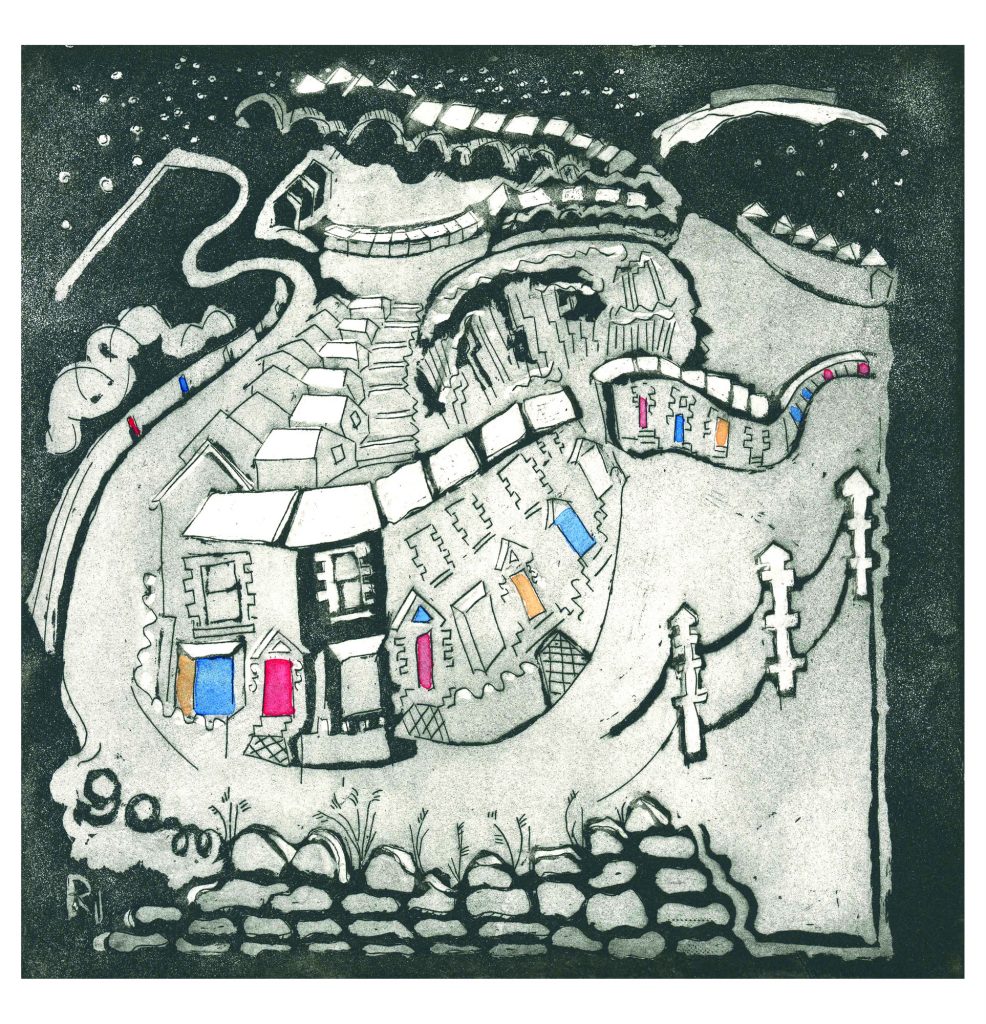
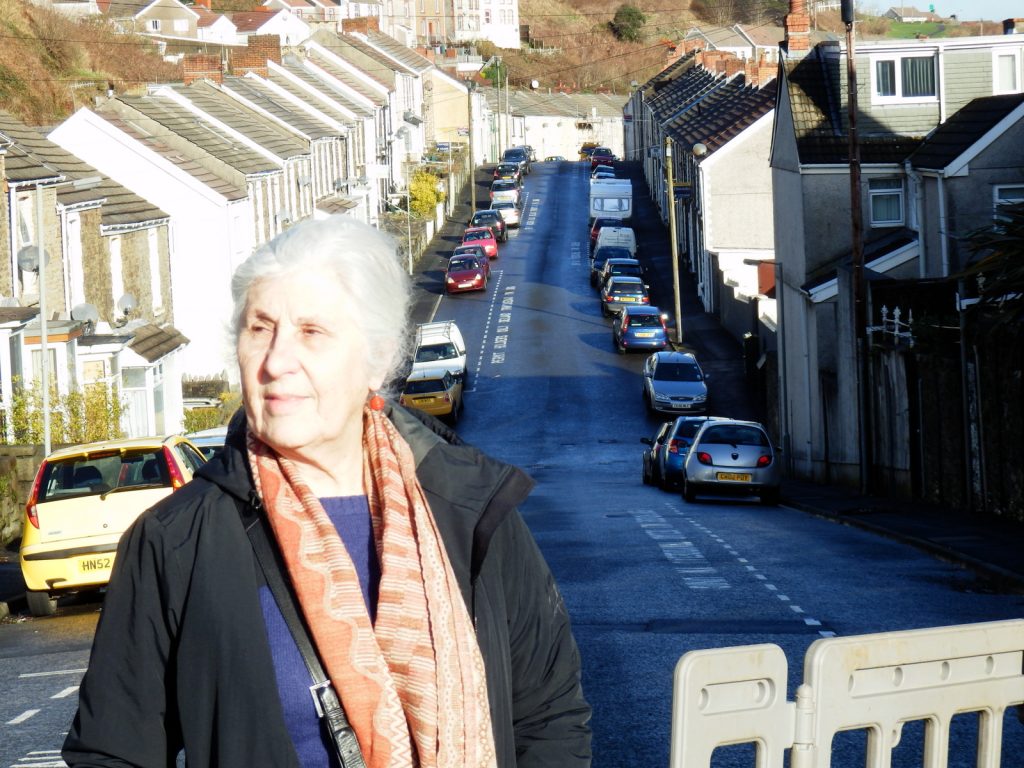
More images of Rosy on YouTube
